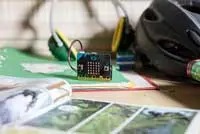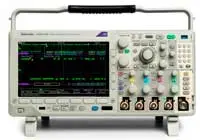Electronics News
Archive : 24 October 2016 год
 Aquantia, a specialist in high-speed Ethernet connectivity solutions for data centres, mobile, and enterprise infrastructure, has unveiled a new class of high-performance connectivity architecture that has the potential, according to the company, to revolutionise next-generation hyperscale data centres.
Aquantia, a specialist in high-speed Ethernet connectivity solutions for data centres, mobile, and enterprise infrastructure, has unveiled a new class of high-performance connectivity architecture that has the potential, according to the company, to revolutionise next-generation hyperscale data centres.
The technology, QuantumStream, has been developed by Aquantia through a strategic collaboration with GLOBALFOUNDRIES, and is the first 100Gbit/s all-electrical technology capable of delivering low latency to networking applications.
The technology is able to deliver vastly improved data rate performance over a single lane of copper previously believed to be possible only by using optical techniques.The availability of this technology should enable system vendors and data centre operators to push towards higher performance and newer topologies in hyperscale architectures while keeping the reliability, low-cost and ease-of-use associated with electrical-based interconnects.
The technology is being aimed at inter and intra rack connectivity up to a few meters complementing longer reach optical connectivity solutions used in hyperscale data centers.
“To date, industry watchers have projected that only optical connectivity will serve the needs of 100Gbit/s and beyond. This presents a huge barrier since optical technologies are intrinsically higher cost,” said Faraj Aalaei, CEO of Aquantia. “Our expertise in complex high-speed copper transceivers, together with GLOBALFOUNDRIES’ 14nm technology will enable a continuous roadmap to the required 100G connectivity and provide our customers with the best combination to differentiate and stay ahead of evolving marketplace demands.”
Under the agreement, GLOBALFOUNDRIES provided access to its 56Gbit/s IP core, enabling Aquantia’s team to then combine it with its patented Mixed-Mode Signal Processing (MMSP) and Multi-Core Signal Processing (MCSP) architectural innovations of high-speed interconnect over copper, providing a 100G interconnect high-performance SerDes solution.
Under the agreement GLOBALFOUNDRIES gains access to the QuantumStream technology for incorporation into its customers’ ASICs, helping to expand the ecosystem of solutions capable of supporting this new interface.
Aquantia’s QuantumStream technology is also easily leveraged to deliver up to 400Gbit/s of bandwidth on conventional DAC cables, resolving one of the most significant challenges currently facing the networking and data center industries.
Author
Neil Tyler
Source: www.newelectronics.co.uk
 In a move intended to build on the on-going success of the micro:bit a new non-profit Foundation has been launched. The Foundation is intended to lower barriers to technology invention for young people, makers and developers and support teachers and educational organisations improve digital skills.
In a move intended to build on the on-going success of the micro:bit a new non-profit Foundation has been launched. The Foundation is intended to lower barriers to technology invention for young people, makers and developers and support teachers and educational organisations improve digital skills.
So far this year the BBC micro:bit partnership has distributed almost 1 million micro:bits to school children in the UK, launched a micro:bit website with four different code editors, and distributed hundreds of resources and supporting content for students and teachers.
The Foundation will take over from the original BBC micro:bit partnership in a phased transition, ensuring long-term support and expansion of the educational program, both in the UK and overseas. ARM, the Institution of Engineering and Technology (IET) and the BBC are among the leading educational and technology organisations supporting the Foundation.
The impact of the micro:bit has been significant; users have visited the website over 13m times, used the code simulator nearly 10m times and compiled code onto their devices nearly 2m times.
“We’ve seen the BBC micro:bit grow from an exciting idea into an educational tool that’s already making a real difference to children’s lives,” said Sinead Rocks, Head of BBC Learning.
According to Gareth Stockdale, Head of Operations at BBC Learning: “Initial research has found that there have been some very positive behavioural changes amongst students using the micro:bit. Among girls 39 percent said that they would now take ICT/computing science as an option, up from 23 percent previously; among all students 86 percent said that it made computer science more interesting, while 88 percent found coding was now less difficult than had previously been the case.”
Outside the UK, early adopters of the micro:bit include Iceland and the Netherlands, and availability will be extended across Europe this year with plans to roll out the device in North America and Asia in 2017. There is interest from more than 20 countries looking to deploy micro:bit educational programs.
Speaking at the launch of the Foundation, Zach Shelby, CEO micro:bit Educational Foundation, said:“We’ve added new exciting features and more are on the way. Technology moves very fast. Next year we will be bringing in new versions of micro bit hardware with more computing resources and new sensors. Already, we now have features like peer-to-peer communications.”
As well as providing an easy-to-use platform to teach STEM skills the micro:bit provides makers, developers and hobbyists with a flexible platform for prototyping a wide range of applications and the BBC is to release schematics for the micro:bit in addition to reference designs from the Foundation.
“By enabling access to tools and resources for young people, educators and makers, expanding the micro:bit’s functionality and extending the reach of this technology, the Micro:bit Educational Foundation will create a vibrant legacy of digital creativity,” commented Mike Muller, chief technology officer, ARM.
Author
Neil Tyler
Source: www.newelectronics.co.uk
 Tektronix has introduced a CAN FD protocol trigger, decode and search solution for its MDO3000 and MDO4000C Series of mixed domain oscilloscopes. The move is said to help automotive engineers meet consumer demand for more capable and sophisticated electronic modules and integrated systems.
Tektronix has introduced a CAN FD protocol trigger, decode and search solution for its MDO3000 and MDO4000C Series of mixed domain oscilloscopes. The move is said to help automotive engineers meet consumer demand for more capable and sophisticated electronic modules and integrated systems.
Widely adopted in the automobile industry, the original CAN specification defined in the ISO 11898 standard limited communication speeds to 1Mbit/s. CAN FD (flexible data rate) is said to solve the bandwidth limitation problem by allowing faster bit rates, while increasing payload size to 64byte.
Tektronix says its CAN FD solution gives automotive engineers working with this protocol a powerful debugging and validation tool to quickly and efficiently validate and troubleshoot designs with full visibility into actual bus traffic.
“For automotive engineers making the move to CAN FD, the combination of our complete testing solution and our mixed domain oscilloscopes, which offer unparalleled integrated functionality and a full suite of accessories, is very compelling,” said Chris Witt, general manager of Tektronix’ Time Domain Business Unit. “We are committed to giving our customers in the automotive sector the market-leading solutions they need to be successful.”
Author
Graham Pitcher
Source: www.newelectronics.co.uk

